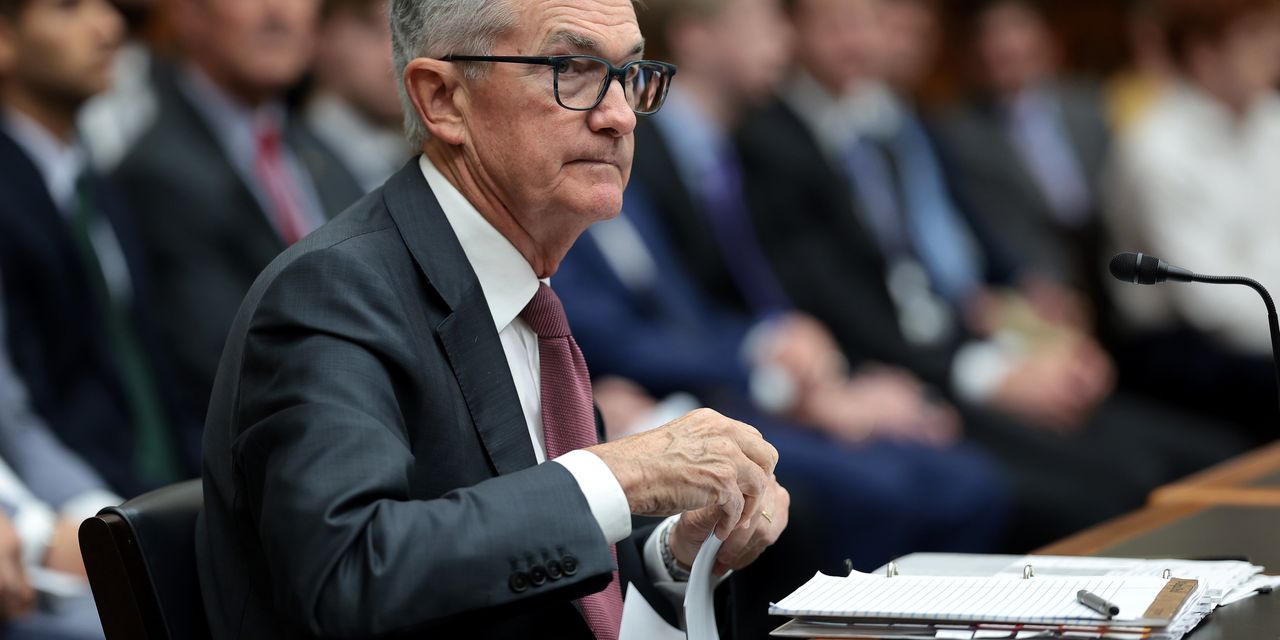
Market Extra: Here’s the bit of good news tucked behind a deeply inverted Treasury yield curve
Win McNamee/Getty ImagesThe U.S. Treasury market, thought by many analysts to be screaming “recession” for much of the past year, may be sending a surprising signal that’s more consistent with the soft-landing scenario articulated by Federal Reserve Chairman Jerome Powell on Wednesday.Though the 2-year yield BX:TMUBMUSD02Y continues to trade a full percentage point above its 10-year counterpart BX:TMUBMUSD10Y, leaving their spread deeply below zero, this so-called inversion can be interpreted in more than just one way. Besides being seen as a worrisome sign of a potential downturn, it can also be read as confidence that the Federal Reserve will succeed in bringing inflation back under control, analysts said.Read: Most deeply inverted Treasury curve in more than 4 decades has one upbeat takeaway for investorsThe 2s/10s spread, one of more than 40 negative spreads in the Treasury market, teetered around minus 100 basis points on Wednesday despite a spate of robust U.S. economic data published on Tuesday. It’s remained consistently negative since last July, even though fears of an economic downturn have recently moderated and a recession has yet to be officially declared by the National Bureau of Economic Research.“An inverted yield curve can actually be consistent with a soft landing,” said Will Compernolle, a macro strategist for FHN Financial in New York. “The case for a soft landing over the next six to 12 months, specifically as it relates to the yield curve and why this time might be different, is that the 2-year rate is high because expectations are for monetary policy to be higher to fight inflation and the 10-year yield is lower because inflation will come down.”Powell, appearing alongside top central bankers from the European Central Bank, Bank of England and Bank of Japan on Wednesday, reinforced those near-term expectations by saying that “although policy is restrictive, it may not be restrictive enough and it has not been restrictive for long enough.” In addition, the Fed chairman said that “a recession to me is not the most likely case but it’s certainly possible.”Following Powell’s remarks at a central-bank forum in Sintra, Portugal, U.S. stocks DJIASPXCOMP struggled for upward momentum in afternoon trading. Meanwhile, two- through 30-year Treasury yields were slightly lower, though held relatively steady.Via phone, Compernolle said Powell is “playing to the idea that the economy can absorb these higher rates without a meaningful uptick in unemployment.” While economic projections released by Fed policy makers on June 14 paint a similar outlook, Compernolle said, “I don’t think it’s the most likely scenario. We’ve had immaculate disinflation, or inflation that’s come down without the labor market breaking. But I still think the labor market is too strong to be consistent with the Fed getting inflation down to 2%, while rental prices could level off at higher levels.”Wall Street investors have been grappling with how the last leg of U.S. inflation could play out, and some of the financial market’s best inflation traders are counting on further easing in price gains in the months ahead. Inflation, as measured by the annual headline rate of the consumer price index, has dropped to 4% in May from a 9.1% peak last June. However, the narrower core reading which the Fed cares about the most remained stubbornly lodged above 5% for the 12-month period that ended in May, and hasn’t eased from 0.4% on a monthly basis for three straight months.“The curve now has been inverted for almost a year and what it means is that the market expects the Fed to remain tight only as long as it takes to bring inflation down,” said Gennadiy Goldberg, head of U.S. rates strategy for TD Securities in New York. “What we don’t know is the speed of the adjustment back to lower rates. But you could interpret the market’s pricing as being consistent with a soft landing, rather than the need to cut rates rapidly. ” The market has been pulling back on its expectations for rate cuts in 2024 and 2025, and “is coming to the realization that the Fed is trying to keep rates higher for a longer period of time,” Goldberg said via phone. While an inverted curve is traditionally a good indicator of approaching recessions, “what it is not very good at, historically, is gauging the timing of that recession.”
Market Pulse Stories are Rapid-fire, short news bursts on stocks and markets as they move. Visit MarketWatch.com for more information on this news.


